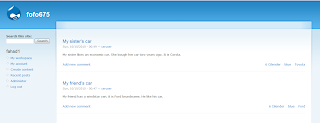
Basically, successful web design is a balancing act between flexibility and simplicity. If a system is excessively uncomplicated, it can only be employed for a single purpose, however, but if it is extremely flexible, it may be tremendously complex for new users to learn.
With Drupal, the needs of the collection and its users can be met as it strives to bring together these contradictory objectives by providing its users with the instruments they need to make their own content management solution, at the same time, providing some prebuilt elements to help them get started. Hence, it can be depicted both as a content management system (CMS) and a content management framework (CMF) – a structure that endeavors to have the strong points of both, without their insufficiencies or deficits.
Also, Drupal treats most content types as variations on the same concept -- a node, so the static pages, the photographs and the text types are all stored in the same way, and the site’s navigation structure is conveniently designed by editing menus, view), and blocks which usually have links to different site sections.
Unlike in the separation one finds in standards-compliant page coding, the XHTML provides the significant structure of the information, while CSS arranges it for presentation. With Drupal, the nodes hold the structured information pertaining to the digitized photo (such as title, content, author, date) or the research item (title, content, go-live date, take-down date), while the menu system, as well as taxonomy (tagging of content) and views, create the information architecture. And lastly, the theme structure, together with its display modules like the panels, controls how all this would look to site visitors.
Since these layers are split up, it can provide an entirely different navigation and presentation of the whole content to diverse users based on their specific needs and roles. Pages can be clustered in a different way, prioritized in a different order and a range of functions and content can be shown or hidden as needed.
No comments:
Post a Comment